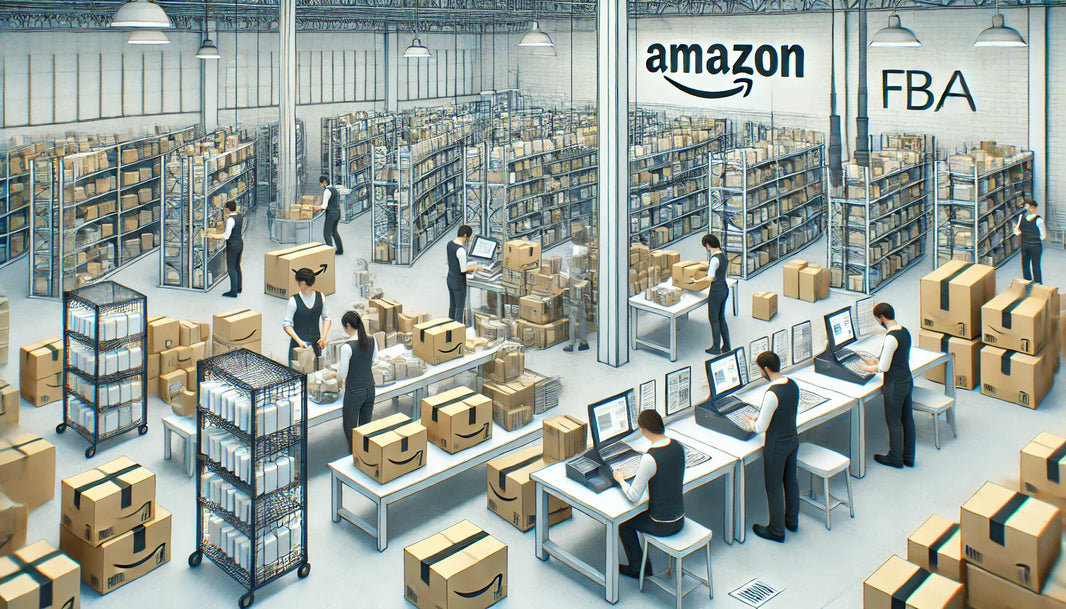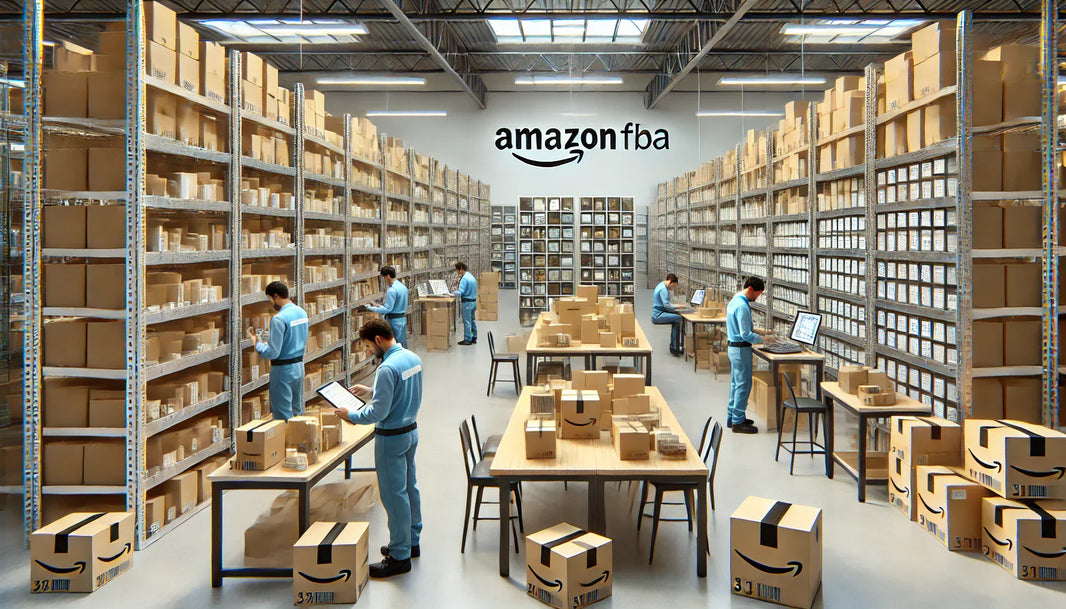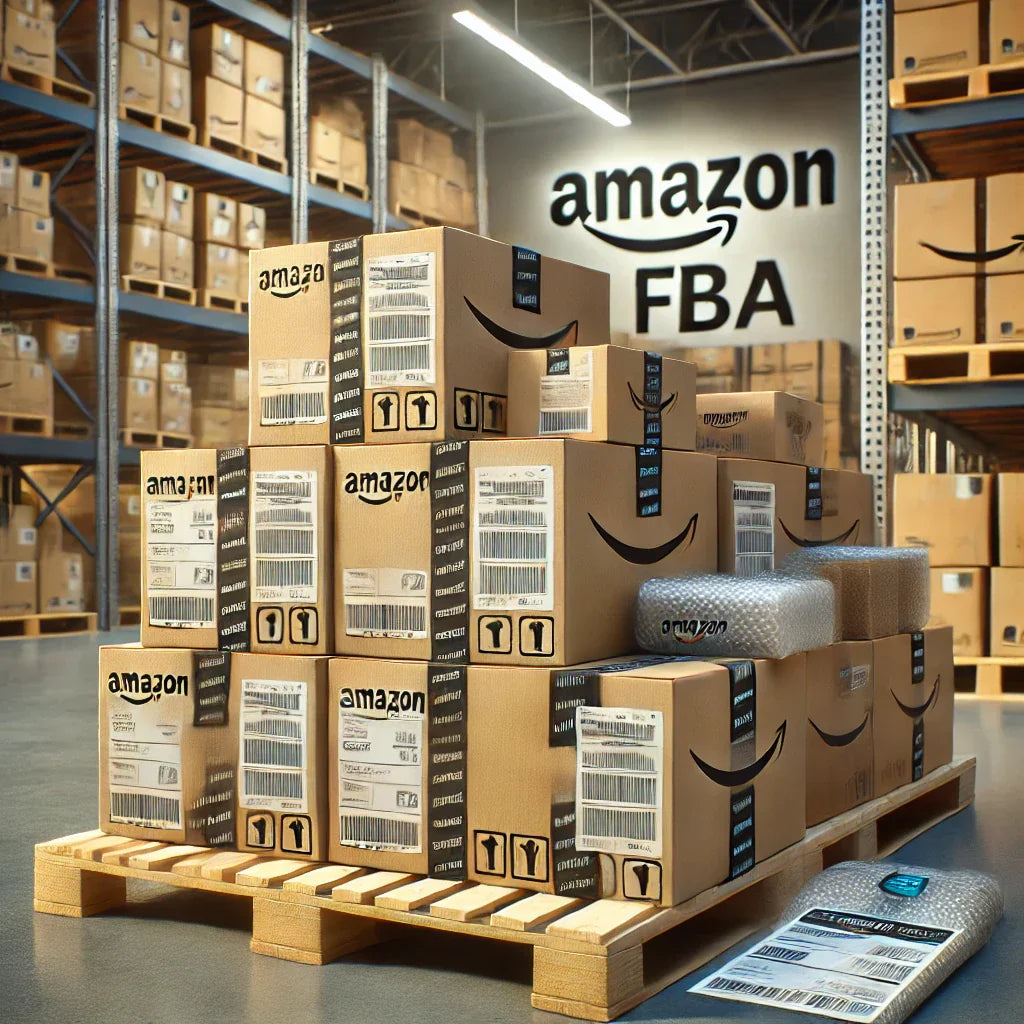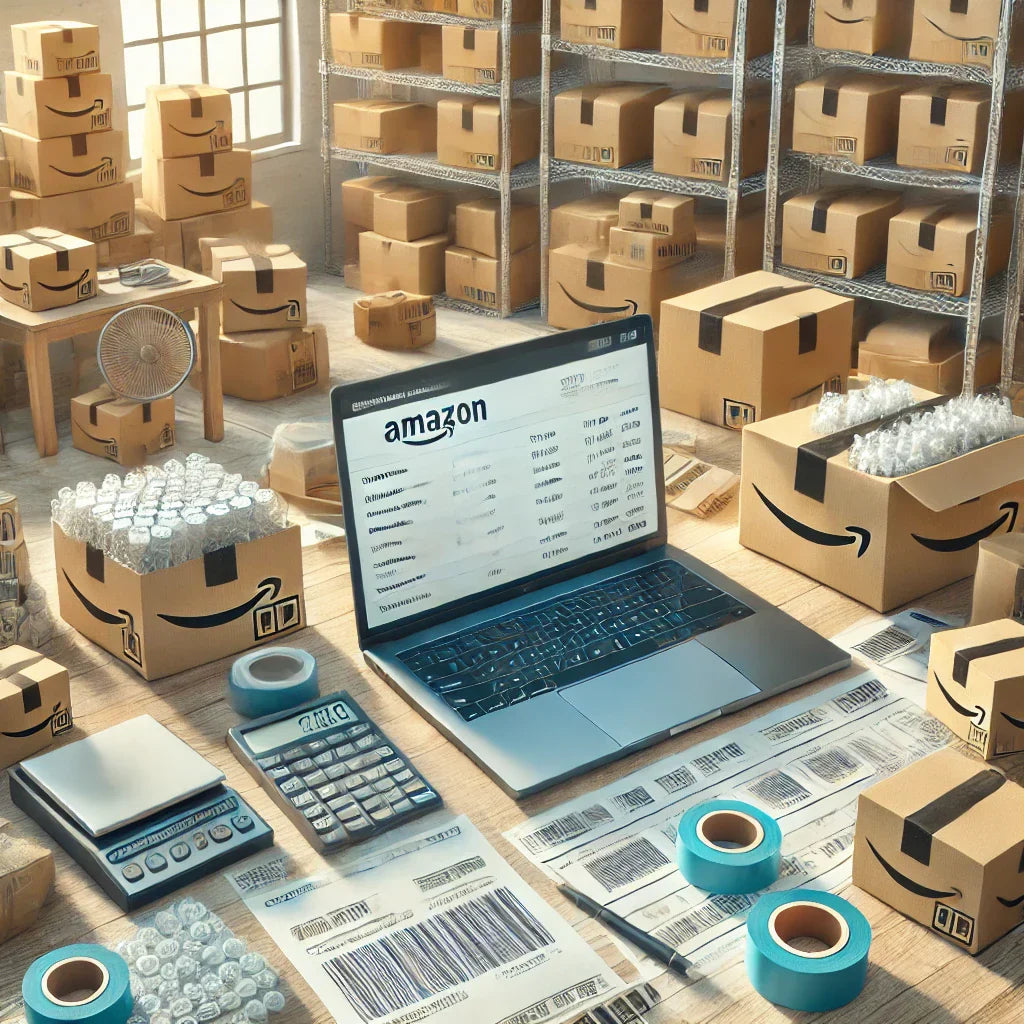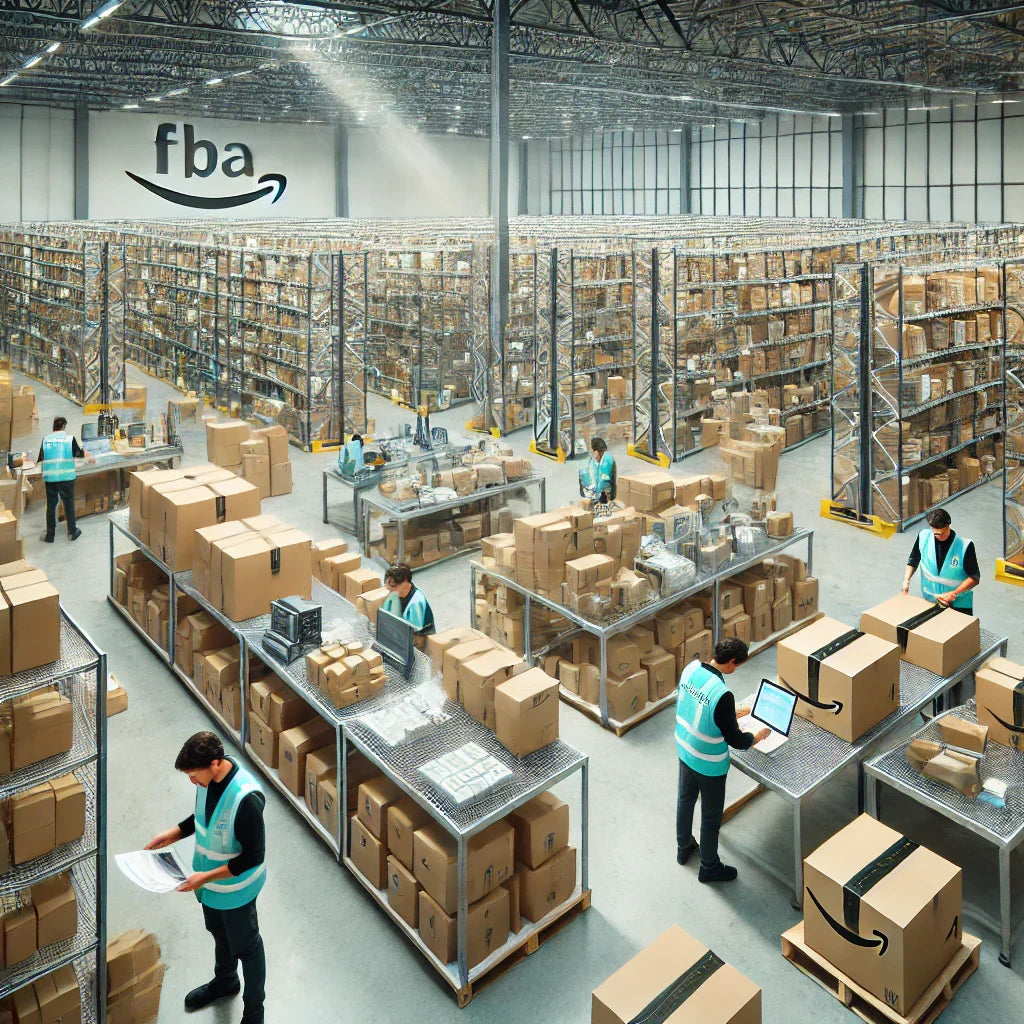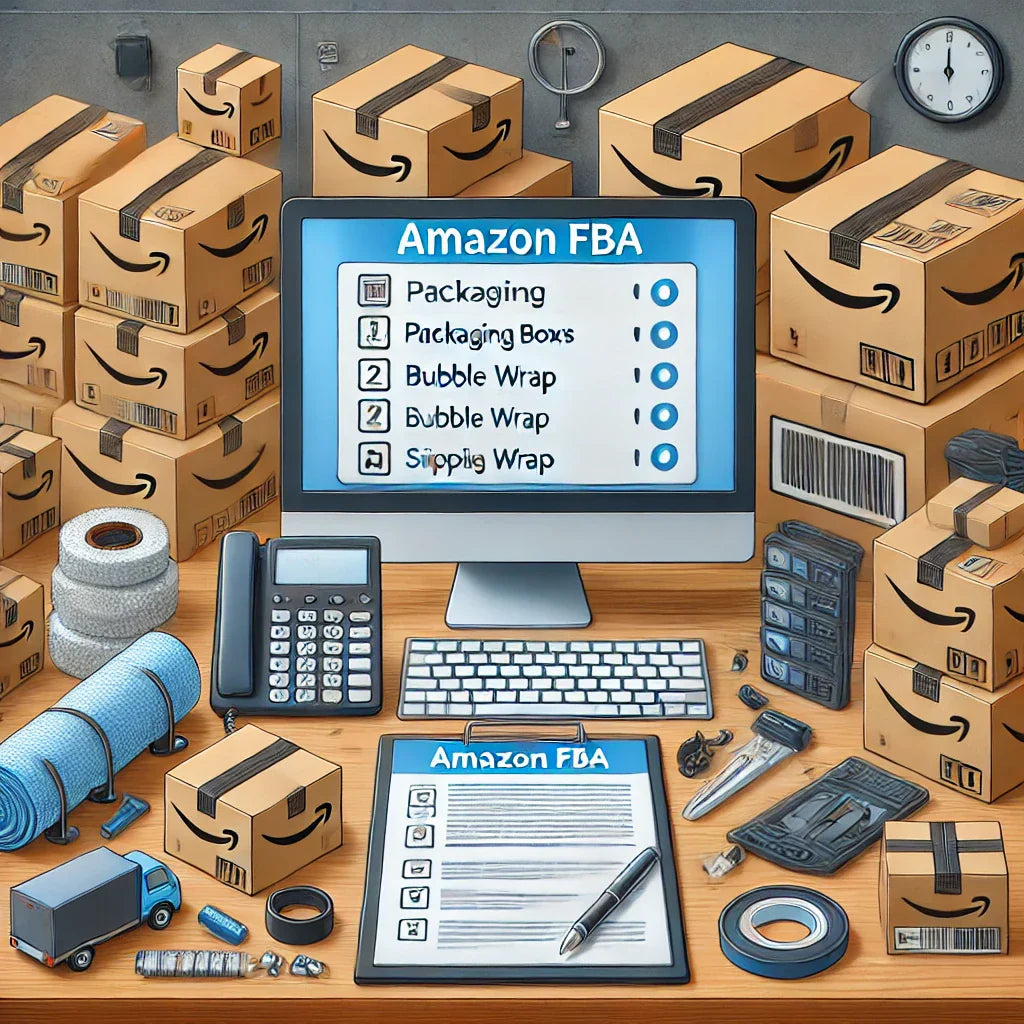In today’s dynamic logistics landscape, selecting the right third-party logistics (3PL) provider can significantly impact a company's supply chain efficiency and bottom line. As businesses seek to enhance their distribution capabilities and manage inventory seamlessly, understanding the essential factors that define a top-tier 3PL provider becomes paramount. From reliability in warehousing services to competitive distribution costs, evaluating these elements ensures that your partnership contributes to streamlined operations and customer satisfaction. This guide will highlight the most critical considerations to help you choose a 3PL provider that aligns with your business needs and long-term goals.

1. Understanding Your Logistics Needs
Before embarking on the search for the perfect 3PL provider, businesses must first have a clear understanding of their logistics requirements. This involves assessing current supply chain operations, pinpointing weaknesses, and outlining specific services needed to enhance efficiency.
Analyzing Current Operations
Evaluate existing processes related to inventory management, order fulfillment, and transportation. Identifying gaps helps determine the scope of services you need from a 3PL partner. For instance, if delays in last-mile delivery are a recurring issue, finding a provider with proven expertise in expedited shipping can be critical.
Aligning Business Goals
Your choice of 3PL should align with the strategic goals of your company, whether it be reducing shipping times, expanding to new markets, or optimizing warehousing costs. A provider capable of scaling services to match business growth ensures longevity in the partnership.
2. Key Qualities to Look for in a 3PL Provider
When assessing potential 3PL partners, focusing on specific attributes will help narrow down the options and select a provider that offers both reliability and innovation.
a. Industry Expertise and Experience
A provider with extensive industry experience will have a better grasp of complex supply chain challenges. This knowledge translates to proactive problem-solving and efficient handling of unforeseen issues. Look for 3PLs that have a strong track record with businesses similar to yours, as this is an indicator of their capability to manage specific logistics needs effectively.
b. Technology and Innovation
Technology is a cornerstone of modern logistics. From warehouse management systems (WMS) to transportation management systems (TMS), the use of cutting-edge technology can greatly enhance operational transparency and data accuracy. Choose a 3PL provider that leverages advanced tech solutions, such as real-time tracking and predictive analytics, to give your business a competitive edge.
c. Flexibility and Scalability
Logistics requirements can change rapidly due to market trends or seasonal demands. A reliable 3PL should offer scalable solutions that can grow or contract with your business. For example, during peak shopping seasons, such as holidays, a partner capable of scaling up their workforce and resources is invaluable.
3. Cost vs. Value: Finding the Balance
Choosing the lowest-cost provider might seem appealing, but in logistics, cost should be weighed against value. The true worth of a 3PL is reflected in the overall efficiency it brings to your supply chain.
The Importance of Transparent Pricing
Look for a provider that offers clear pricing structures and no hidden fees. Transparent pricing helps you better manage budgets and project long-term expenses, which is essential for strategic planning.
Value-Added Services
Assess what additional services the provider offers, such as reverse logistics, kitting, or cross-docking. These can add substantial value to your operations and reduce the need for multiple partners. A 3PL offering a broad range of services under one roof can improve coordination and reduce overall operational complexity.
4. The Role of Customer Service
Customer service is a differentiator among 3PLs. A provider that communicates effectively and addresses issues promptly will foster a stronger, more cooperative partnership.
Communication and Responsiveness
Test a potential partner’s communication style during the vetting process. A responsive and transparent 3PL will be easier to work with, especially when unexpected challenges arise. Choose a provider that offers multiple communication channels and dedicated support representatives.
Problem Resolution Protocols
Find out how the 3PL handles disputes and problem resolution. A structured protocol for dealing with mishaps, whether they involve damaged goods, delivery delays, or billing discrepancies, will minimize disruptions to your supply chain.
5. Geographic Reach and Network Capabilities
A comprehensive geographic reach allows for quicker delivery times and broader market penetration. Providers with an established network of facilities and transportation options across key regions can streamline your distribution process and reduce shipping times.
Warehouse Locations
Evaluate the 3PL’s warehousing footprint. Strategically located warehouses mean faster access to markets and reduced transit times. For businesses aiming to expand internationally, choosing a provider with global reach is crucial.
Transportation Options
The modes of transportation that a 3PL offers can directly impact cost-efficiency and delivery speed. Providers that own or partner with fleets of various types (e.g., trucks, ships, air cargo) offer more flexible and reliable options.
6. Compliance and Certifications
Regulatory compliance is a critical factor in choosing a 3PL provider. Ensuring that your partner adheres to industry regulations safeguards your operations from potential legal and operational setbacks.
Understanding Industry Standards
Check for certifications such as ISO 9001 (quality management) or compliance with standards set by the Occupational Safety and Health Administration (OSHA). These certifications indicate that the 3PL prioritizes quality and safety.
Adapting to Industry Regulations
A dependable 3PL should stay updated with changing regulations related to customs, trade laws, and transport safety. This adaptability minimizes risks and ensures that your supply chain remains compliant.
7. Performance Metrics and KPIs
Discuss key performance indicators (KPIs) with potential 3PL partners to establish benchmarks for success. KPIs such as on-time delivery rates, order accuracy, and inventory turnover are vital for monitoring the effectiveness of the partnership.
Defining Success Metrics
Ensure that both parties agree on what success looks like. Regularly reviewing these KPIs provides clarity on the 3PL’s performance and can highlight areas for improvement.
Continuous Improvement Processes
A 3PL that invests in continuous improvement demonstrates a commitment to service enhancement. Providers that seek feedback and implement changes based on client input are more likely to contribute to your business’s growth.
8. Risk Management and Contingency Planning
Supply chains are vulnerable to disruptions ranging from natural disasters to political changes. The ability of a 3PL provider to manage risks and respond to crises can prevent operational downtime.
Evaluating Risk Management Strategies
Inquire about the 3PL’s approach to risk management. A solid plan should include strategies for rerouting shipments, reallocating resources, and minimizing delays in case of unexpected events.
Insurance and Liability Coverage
Ensure that the 3PL has comprehensive insurance and liability coverage. This not only protects your goods but also ensures that the provider is prepared for incidents that might impact your logistics.
9. Sustainability Practices
Environmental sustainability is becoming a key focus for businesses across all industries. Working with a 3PL that aligns with your sustainability goals can enhance your brand’s reputation and meet customer expectations for eco-friendly practices.
Green Logistics Solutions
Choose a provider that implements green practices such as fuel-efficient transportation, eco-friendly packaging, and waste reduction initiatives. These steps contribute to lower carbon emissions and a more sustainable supply chain.
Certifications and Green Initiatives
Look for certifications like ISO 14001 for environmental management or participation in programs that promote sustainable logistics. Providers that actively engage in green logistics can become valuable partners in your corporate social responsibility (CSR) efforts.

10. Building a Long-Term Partnership
A successful 3PL relationship is not just a vendor-client interaction but a true partnership that evolves over time. Focus on developing a collaborative relationship that emphasizes trust, transparency, and mutual growth.
Periodic Reviews and Feedback
Regular performance reviews ensure that the 3PL remains aligned with your expectations and adapts to any changes in business needs. Use these sessions to discuss KPIs, new service requirements, and upcoming challenges.
Strengthening Collaboration
Building a strong partnership involves open communication, proactive problem-solving, and shared objectives. Investing time and resources into nurturing this relationship can result in more tailored solutions and better overall service.
11. Evaluating Technology Integration Capabilities
The modern supply chain relies heavily on technology for enhanced visibility, efficiency, and customer satisfaction. As such, a potential 3PL provider should not only employ advanced logistics technology but also seamlessly integrate these systems with your existing platforms.
Ensuring System Compatibility
One of the first steps is to confirm that the 3PL’s technology can integrate smoothly with your current enterprise resource planning (ERP) systems, warehouse management systems (WMS), or transportation management systems (TMS). Integration capabilities ensure data flows seamlessly between your operations and the 3PL’s systems, reducing manual data entry and the risk of errors.
Real-Time Tracking and Data Analytics
A 3PL that provides real-time tracking of shipments, along with analytics tools, can give you insights into shipment status, delivery times, and potential delays. Advanced data analytics also help in predicting future trends, optimizing routes, and improving overall logistics efficiency.
Embracing Automation and Robotics
The use of automation and robotics in warehouses can significantly enhance efficiency, speed, and accuracy. Automation helps manage repetitive tasks such as sorting, picking, and packing, which reduces the margin of human error and increases productivity. Partnering with a 3PL that invests in these technologies can contribute to smoother, faster fulfillment processes.
12. Customizing Logistics Solutions
Customization is a key component in differentiating one 3PL provider from another. While standard services are foundational, tailored solutions can align more closely with your unique business requirements.
Assessing Customization Options
Investigate if the 3PL offers tailored services such as specialized packaging, branded delivery options, or custom reporting. Businesses dealing with fragile, oversized, or specialized products might require custom packaging solutions that a flexible 3PL can provide.
Sector-Specific Expertise
Certain industries, such as pharmaceuticals, electronics, or food and beverage, come with specific logistics challenges. Selecting a 3PL with experience in your sector ensures they understand the particular compliance standards, handling protocols, and industry best practices. This expertise can greatly streamline processes and enhance your supply chain's reliability.
13. Considering Long-Term Costs and Investments
While focusing on immediate logistics expenses is crucial, businesses should take a long-term view of the financial implications of working with a 3PL. This involves considering total cost of ownership, including potential investments in technology and collaborative innovations.
Calculating Total Cost of Ownership
Total cost of ownership includes direct costs, such as transportation and warehousing fees, and indirect expenses like IT integration, staff training, and process adjustments. Understanding these costs helps create a realistic budget and assess whether the partnership will deliver value over time.
Long-Term Partnership Benefits
Partnering with a 3PL that invests in continual improvement—be it through training, technology, or process innovation—offers long-term benefits. For instance, a provider that regularly updates its systems and processes to reflect industry advancements can help you stay ahead of competitors.
14. Reviewing Security and Data Protection Policies
In an era where data security is paramount, ensuring that a 3PL provider has robust security measures is critical to protecting your sensitive information.
Data Privacy Regulations
Confirm that your chosen 3PL complies with relevant data protection regulations, such as the General Data Protection Regulation (GDPR) for businesses operating in Europe, or other applicable local and international data privacy laws. This compliance indicates that the provider values and secures your data.
Cybersecurity Measures
Ask potential 3PL providers about their cybersecurity infrastructure, including measures like data encryption, secure data storage, and regular system audits. Providers that employ multi-layered security protocols demonstrate a commitment to protecting client data from breaches and unauthorized access.
15. Evaluating Training and Employee Expertise
The quality of a 3PL provider’s service is only as good as the expertise of its workforce. Well-trained and knowledgeable employees contribute to the seamless execution of logistics services.
Staff Training Programs
Inquire about the provider’s training programs and how often they are updated. Regular training ensures that employees are well-versed in current best practices and technologies, reducing the likelihood of errors and service disruptions.
Specialized Staff Expertise
For businesses with complex logistics needs, having access to experts in areas such as customs brokerage, hazardous material handling, or temperature-sensitive shipping can be a significant advantage. This specialization not only helps in complying with regulations but also increases operational efficiency.
16. Assessing Innovation and Future-Readiness
The logistics industry is constantly evolving, driven by new technologies and changing market demands. A forward-thinking 3PL provider that embraces innovation can help future-proof your supply chain.
Commitment to Continuous Innovation
Review the provider’s history of implementing new technologies or processes. Are they quick to adopt innovations such as blockchain for enhanced traceability or artificial intelligence (AI) for demand forecasting? A provider with a strong focus on innovation can help your business adapt to future logistics challenges.
Research and Development (R&D) Investments
Some 3PLs allocate resources specifically for R&D to develop new logistics solutions and technologies. This proactive approach ensures that they are ready to meet new customer demands and industry trends. Partnering with a 3PL that prioritizes R&D can position your business to benefit from the latest industry advancements.
17. Transparency and Ethical Practices
Ethical practices and transparency build trust between your business and the 3PL provider, ensuring that your brand’s reputation remains intact.
Ethical Business Standards
Choose a 3PL provider that adheres to ethical labor practices, environmental regulations, and transparent business operations. These practices not only reflect positively on your business but also align with consumer expectations for responsible corporate behavior.
Supply Chain Transparency
A transparent supply chain allows for greater visibility into operations, which is particularly important in complex global networks. Providers that openly share information about their sourcing practices, sustainability efforts, and logistical processes can enhance trust and provide peace of mind.
18. Global Capabilities for International Expansion
If your business operates on an international scale or plans to expand globally, selecting a 3PL provider with global capabilities is essential.
Knowledge of International Regulations
Ensure the 3PL has experience navigating international trade regulations, tariffs, and customs procedures. This expertise reduces the risk of delays, fines, and compliance issues.
Multi-Modal Transportation
Providers that offer multi-modal transportation solutions, such as combining air, sea, and land transport, can adapt to various shipping needs and help reduce transit times. This flexibility is invaluable for businesses looking to optimize global distribution.

19. Fostering Collaborative Innovation
A collaborative approach to innovation can strengthen the relationship between your business and the 3PL provider. By working together on new strategies and solutions, both parties can achieve better outcomes.
Joint Problem-Solving
Encourage a collaborative environment where your team and the 3PL’s team can discuss challenges and brainstorm solutions. This approach not only resolves issues faster but also leads to innovative practices that improve overall efficiency.
Shared Technology Platforms
Using shared platforms can facilitate better coordination between your business and the 3PL provider. Cloud-based systems, for instance, can enhance real-time data sharing and streamline decision-making processes.
20. Adapting to Market Changes
The logistics industry is influenced by global events, market fluctuations, and technological advancements. Your 3PL provider should be agile enough to adapt to these changes without compromising service quality.
Market Trend Analysis
Assess whether the 3PL provider stays informed about industry trends, such as the increasing demand for same-day delivery or shifts in consumer expectations. Providers that track and adapt to market trends can better align their services with your evolving needs.
Proactive Strategy Adjustments
Look for a partner that actively monitors market conditions and proposes adjustments to your logistics strategy when needed. This could mean re-routing shipments due to geopolitical tensions or finding alternative transport options during carrier strikes.
21. Building a Culture of Trust
Trust is a vital component of any business partnership, and selecting a 3PL provider is no exception. Building a strong, trust-based relationship can lead to smoother operations and greater mutual success.
Open Communication Channels
Ensure that the 3PL maintains transparent and open communication. Regular check-ins, updates, and reports should be part of the provider’s service offerings to keep your team informed at every stage of the logistics process.
Long-Term Collaboration Focus
Evaluate whether the 3PL prioritizes short-term gains or seeks to develop a lasting partnership. Providers that are committed to long-term collaboration tend to be more invested in delivering consistent, high-quality service and are more likely to tailor their solutions to your business's specific needs.
22. Adopting Sustainable and Green Practices
Sustainability is becoming increasingly important for consumers and businesses alike. Working with a 3PL that aligns with your sustainability goals helps build a strong brand image and fosters a positive impact on the environment.
Implementing Green Supply Chain Initiatives
A 3PL provider that employs eco-friendly practices, such as optimizing delivery routes for fuel efficiency, using electric vehicles, and reducing waste in packaging, adds value to your logistics operations. These initiatives can lower emissions and contribute to a cleaner supply chain.
Sustainable Packaging Solutions
Check if the 3PL offers sustainable packaging options or reusable containers that align with your company’s environmental policies. Sustainable solutions can reduce your carbon footprint and resonate well with eco-conscious consumers.
23. Client Testimonials and Case Studies
One of the best ways to assess the reliability of a 3PL provider is through client testimonials and detailed case studies. These resources provide real-world examples of how the provider has successfully managed logistics challenges.
Analyzing Success Stories
Case studies that illustrate how a 3PL solved a specific problem or improved logistics for a client provide valuable insight. Look for examples that align with the types of challenges your business faces to gauge how effectively the 3PL might meet your needs.
24. Evaluating Partner Reputation and Stability
The reputation and financial stability of a 3PL provider can greatly influence the reliability of your logistics operations. Choosing a partner with a proven track record ensures that your business is working with a dependable service provider.
Researching Market Reputation
Examine third-party reviews, ratings, and client feedback to get a sense of how the provider performs under different conditions. Industry publications, reports, and logistics trade journals often highlight top-performing 3PLs, which can be a helpful reference during your research.
Financial Health Assessment
Partnering with a financially stable provider reduces the risk of service interruptions due to bankruptcy or financial mismanagement. Request financial statements or review annual reports to assess the 3PL’s economic standing and sustainability.
25. Assessing Scalability for Business Growth
As your business expands, your logistics needs will evolve. Partnering with a 3PL provider that offers scalable solutions is vital to ensure that your supply chain can handle increased volumes and complexity.
Expansion Capabilities
Evaluate the provider’s ability to add services or expand existing solutions as your business grows. This could mean more warehouse space, additional staff, or new distribution channels. A 3PL with scalable infrastructure will adapt more easily to increased demand.
Future-Proofing Your Supply Chain
Scalable solutions also mean your logistics operation is prepared for market changes. Whether entering new geographic markets or launching new product lines, a 3PL that offers flexibility in its services is better suited for evolving business models.
26. Exploring Value-Added Services
Value-added services go beyond basic logistics and can provide a competitive edge by enhancing customer satisfaction and operational efficiency.
Custom Labeling and Kitting
Providers that offer custom services such as labeling, kitting, or light assembly can reduce the need for additional steps in your supply chain. This helps streamline processes and cuts down on handling times, contributing to a faster order-to-delivery cycle.
Reverse Logistics and Returns Management
An efficient returns management system is crucial for businesses dealing with e-commerce or high-volume consumer goods. A 3PL with a robust reverse logistics solution can manage product returns seamlessly, ensuring that customers receive prompt service and that returned products are processed efficiently for resale or recycling.
27. Impact of Global Economic Factors on 3PL Operations
The global economy can significantly impact the logistics sector, influencing everything from fuel prices to trade regulations. Choosing a 3PL provider that can navigate these complexities is vital for long-term success.
Adapting to Currency Fluctuations
Currency fluctuations can impact international shipping costs and overall expenses. A 3PL provider experienced in handling multi-currency operations and currency hedging can help mitigate these risks and keep your financial planning stable.
Managing Tariffs and Trade Restrictions
Providers that have expertise in customs and trade regulations can help avoid costly delays or penalties due to non-compliance. Look for 3PLs that stay informed of changing international laws and trade agreements to ensure your goods move smoothly across borders.
28. Importance of a Dedicated Account Manager
A dedicated account manager serves as a single point of contact, ensuring seamless communication between your company and the 3PL provider.
Benefits of a Dedicated Contact
Having an account manager allows for more personalized service. They can quickly address issues, coordinate services, and align logistics strategies with your business objectives. This level of attention ensures that your business is prioritized and that there is accountability for any challenges that may arise.
Ongoing Consultation and Strategy Adjustments
Account managers often provide valuable insights that help optimize your supply chain. Regular strategy consultations ensure that the partnership continues to align with your business goals, adapting to seasonal changes, market demands, or shifts in strategy.
29. Cultural Fit and Shared Values
Cultural alignment between your business and the 3PL provider can impact the success of your partnership. Shared values around customer service, innovation, and ethical practices foster a collaborative environment.
Evaluating Company Culture
Spend time understanding the 3PL’s mission, values, and company culture. Aligning on core values such as transparency, accountability, and a focus on continuous improvement can strengthen your relationship and lead to better cooperation.
Long-Term Cultural Alignment
When both parties prioritize similar values, the partnership is more likely to thrive and adapt to future challenges. This alignment becomes even more essential in global operations, where different cultural nuances can impact logistics performance.

30. Leveraging Industry Insights and Best Practices
A 3PL provider that shares industry insights and employs logistics best practices can help your business stay ahead of the competition. This collaboration encourages continuous learning and improvements in supply chain management.
Regular Training and Workshops
Some 3PL providers offer training and workshops for their clients, enabling your team to stay updated on logistics trends and best practices. This education is valuable for building internal knowledge and creating a more informed approach to logistics planning.
Access to Industry Reports and Analysis
Providers that maintain memberships with industry associations or have access to market research data can share valuable insights. This knowledge can guide your logistics strategy, helping you adapt to industry trends and make data-driven decisions.
31. Understanding Lead Times and Delivery Schedules
Consistency in lead times and adherence to delivery schedules are critical to maintaining customer satisfaction and trust. Evaluating how a 3PL provider manages these elements can indicate their reliability.
Standard Lead Time Metrics
Examine the average lead times the 3PL provider offers and how they compare to industry standards. Reliable providers will have clear lead time metrics and proven track records in meeting or exceeding them.
Contingency Plans for Delays
No provider is immune to occasional disruptions. Ensure that the 3PL has contingency plans in place, such as alternative routes or backup transportation options, to handle delays without significantly impacting your supply chain.
32. Seamless Integration with E-commerce Platforms
For businesses operating online, integration between the 3PL’s system and e-commerce platforms is essential for smooth order processing and tracking.
Direct API Integrations
Evaluate if the 3PL provider offers direct integration through APIs with popular e-commerce platforms such as Shopify, Magento, or WooCommerce. This connection facilitates real-time data exchange, automating updates on order status and inventory levels.
Streamlining Multi-Channel Fulfillment
A 3PL that supports multi-channel fulfillment can consolidate inventory management and streamline operations for businesses selling across various platforms, such as online marketplaces and direct-to-consumer websites. This flexibility enhances customer service and keeps operations efficient.
33. Environmental Impact Reporting
A responsible 3PL provider will not only implement sustainable practices but also provide clear reports on their environmental impact. Such transparency enables your business to make informed decisions about partnerships and enhances your sustainability reporting.
Data on Emissions and Waste Reduction
Select a 3PL that tracks and reports on their carbon emissions, energy consumption, and waste management practices. Providers that actively work to reduce their carbon footprint demonstrate a commitment to environmental stewardship and can be key partners in your sustainability efforts.
Green Certifications and Initiatives
Review whether the provider has earned certifications such as LEED (Leadership in Energy and Environmental Design) for their facilities or is part of green logistics initiatives. These certifications indicate a higher standard of environmental performance.
34. Assessing Technological Adaptability
In a rapidly evolving tech landscape, your 3PL provider should demonstrate the ability to adopt new technologies and adapt existing systems to improve service delivery.
Openness to Technological Upgrades
A forward-thinking 3PL will be open to adopting new technologies such as blockchain for secure, transparent record-keeping or IoT (Internet of Things) devices for enhanced tracking of shipments. These tools can provide an added layer of reliability and insight.
Custom Technology Solutions
Some 3PLs offer customizable technology solutions that cater specifically to your business’s logistics needs. This adaptability ensures that the technology complements your operations rather than forcing you to adjust to generic systems.
35. Measuring Return on Investment (ROI) with a 3PL
Calculating the ROI from a 3PL partnership helps determine whether the provider is contributing positively to your bottom line.
Key ROI Metrics
Monitor key indicators such as reduced transportation costs, improved delivery times, and enhanced customer satisfaction to measure ROI. A comprehensive review of these metrics will help you understand the tangible and intangible benefits of the partnership.
Continuous Performance Evaluation
Schedule regular performance evaluations with your 3PL to review KPIs and ROI. These evaluations should involve discussions on areas of improvement, potential cost savings, and further investments to enhance supply chain efficiency.
36. Addressing Seasonal Logistics Demands
Seasonal peaks, such as holiday sales or back-to-school shopping, can challenge even the most robust logistics operations. A 3PL provider that can manage seasonal fluctuations seamlessly is a valuable asset.
Resource Allocation During High Demand
Determine whether the provider can scale up their operations, workforce, and transportation resources during high-demand periods. This capability helps maintain service quality and avoids delays during peak seasons.
Planning for Seasonal Inventory
Work with the 3PL to create strategic plans for seasonal inventory management. This could include pre-stocking goods in key warehouse locations to ensure quick dispatch when orders increase.
37. Aligning with Technological Innovations in Real-Time Data Management
Access to real-time data allows for better decision-making and enhances operational visibility. Partner with a 3PL provider that prioritizes up-to-date technology that supports real-time data sharing.
Benefits of Real-Time Data Access
Real-time data provides accurate information on shipment locations, expected delivery times, and potential delays. This visibility helps reduce uncertainties and improve communication with customers.
IoT and Sensor Technology
Providers that utilize IoT devices in their logistics operations can offer temperature monitoring for sensitive goods, geolocation tracking for shipments, and status updates that enhance transparency. This technology supports proactive responses to potential issues, improving overall efficiency.
38. Managing Specialized Logistics Requirements
Certain industries and products come with specific logistical challenges that require a tailored approach. Partnering with a 3PL provider experienced in managing specialized logistics can make a significant difference in meeting industry standards and customer expectations.
Handling Perishable Goods
If your business involves perishable items such as food, pharmaceuticals, or temperature-sensitive goods, selecting a 3PL with expertise in cold chain logistics is crucial. Ensure the provider has refrigerated storage, temperature-controlled transport options, and reliable monitoring systems to maintain product integrity.
Compliance with Hazardous Material Regulations
For companies dealing with hazardous materials, a 3PL should demonstrate comprehensive knowledge of safety regulations and handling practices. This includes proper labeling, storage, and transportation as defined by regulations such as the U.S. Department of Transportation (DOT) or international standards.
39. Evaluating Delivery Speed and Last-Mile Solutions
The final mile in the delivery process often proves to be the most challenging and expensive segment of logistics. A 3PL that excels in last-mile solutions can greatly enhance customer satisfaction by ensuring timely and accurate deliveries.
Fast and Reliable Last-Mile Capabilities
Providers that specialize in last-mile logistics can navigate urban areas, plan efficient routes, and handle specific delivery instructions. Whether it's same-day delivery, contactless drop-offs, or scheduled time slots, ensure the 3PL can accommodate diverse customer preferences.
Utilizing Local Partnerships
A 3PL with a network of local couriers or partnerships can improve the reach and efficiency of last-mile deliveries. This collaboration ensures that deliveries remain on schedule and can adapt to unforeseen circumstances, such as traffic congestion or weather disruptions.
40. Understanding 3PL Industry Trends
Staying informed about current and emerging trends in the 3PL industry helps your business remain competitive and responsive. The right provider will not only be aware of these trends but will actively incorporate them into their services.
Automation and AI Integration
Automation, powered by AI and machine learning, is transforming the logistics industry. Evaluate whether the 3PL provider uses AI-driven tools for inventory forecasting, route optimization, and predictive maintenance. These technologies enhance precision and help optimize logistics operations.
Growth of E-commerce Fulfillment Centers
With the rise of e-commerce, many 3PLs are investing in fulfillment centers dedicated to online orders. These centers are designed to handle high volumes of small, varied shipments, making them essential for businesses with strong e-commerce components. A provider that can support direct-to-consumer shipping with minimal lead times ensures a competitive advantage.

Conclusion
Choosing the best 3PL provider involves more than just comparing price quotes. It requires a deep understanding of your logistics needs, thorough evaluation of potential partners, and a focus on qualities such as flexibility, technology use, and customer service. By considering these essential factors, you can select a 3PL provider that not only meets your current needs but supports your business’s growth and strategic objectives over the long term. The right 3PL partnership can streamline operations, reduce costs, and ultimately enhance customer satisfaction, contributing to sustained success in an increasingly competitive market.
Read More
- What is 3PL? Understanding the Basics of Third-Party Logistics
- Top Benefits of Using a 3PL Provider for Your Business
- 3PL vs. 4PL: Key Differences and How to Choose the Right Logistics Partner
- How 3PL Services Improve Supply Chain Efficiency and Reduce Costs
- The Future of 3PL: Emerging Trends in Third-Party Logistics
- How 3PL Logistics Solutions Empower E-commerce Businesses to Scale


